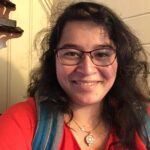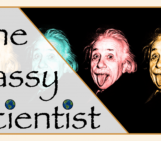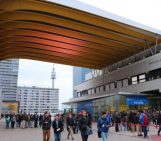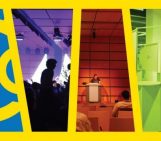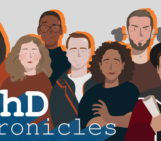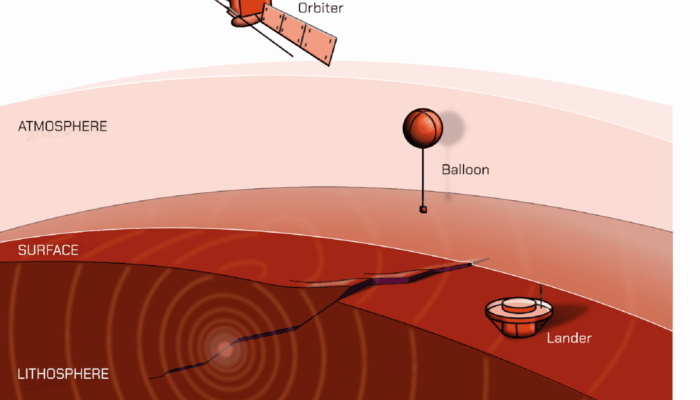
The 2025 Outstanding Early Career Scientist Award of the Geodynamics Division was awarded to Iris van Zelst in recognition of her outstanding ability to connect research fields including earthquake dynamics, planetary sciences and geodynamics, along with her profound engagement with science outreach and promotion of diverse and inclusive working enviroments. In this interview, Iris -also former EGU GD blog editor and very well-known figure in the blog- talks about her academic journey and her thoughts of the future holding for the discipline.
Iris van Zelst’s Award Lecture took on Tuesday 29 Apr at the EGU General Assembly.
How would you describe your research in a nutshell?
I study the geodynamics and seismology of Venus and to do so, I mainly use numerical modelling and theoretical approaches. Basically, I think it would be really cool to find out if there are active tectonic processes and quakes on Venus, so I am trying to do that. My background is in Earth sciences, so before my planetary work I did a lot of research on subduction dynamics and seismicity, which I am now trying to apply to Venus.
What was your reaction to the news that you had been awarded the ECS Division Award?
I felt myself grow very still and cold and couldn’t quite believe it! I had been actively campaigning for more nominations of early-career women over the past year (with success!) and had nominated a bunch of people this year as well, so I had been eagerly awaiting the announcement to see if one of my nominees had won again.
And then I got the email!
It felt very surreal and a large part of me thought (and continues to think) that it isn’t truly deserved and that they just gave it to me to get rid of me nagging on about the diversity in the recipients of this award. But I’ve been told I need to let that go and just accept that I won this thing. It’s just so hard to do when you know there are so many outstanding friends and colleagues out there! I feel very lucky.
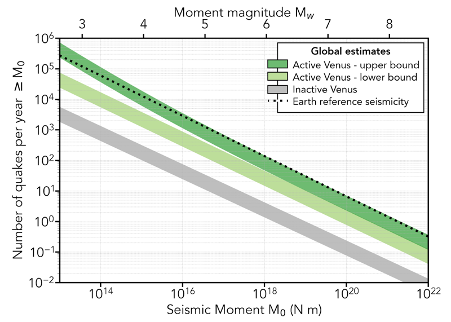
Figure 1: Three end‐member estimates of the global range of potential quake size‐frequency distributions on Venus determined by scaling the seismicity of the Earth to Venus through tectonic analogues (Van Zelst et al., 2024).
What kind of impact do you hope your work will have in the field or in the broader community?
I really hope my work will someday (indirectly) lead to a mission to Venus that will look for seismicity. That would be incredibly cool! More modest dreams include increased interest in the geodynamics / seismology interface. I think there is a lot to explore and it’s fun to play with the different time scales of these two fields, which are inherently connected.
On a more personal note, I hope my range of side projects and the fact that I (a woman of colour) won the award shows others that you really can thrive in science regardless of who you are or where your interests lie. Indeed, you can thrive precisely because of who you are! Well, I’m not sure if I’m thriving… but at least I’m surviving!
Misguidedly, when I started my PhD I really got it into my head that pure research is the only way to go and it took me a while to realise that 1. I enjoy a great many things (research among them, but not exclusively) and 2. you can be a scientist and do things beyond research. In fact, I think you should! It’s definitely part of your work.
So, basically, I hope people will realise that you don’t have to limit yourself or hide parts of yourself. Instead, celebrate what makes you unique and go for it!
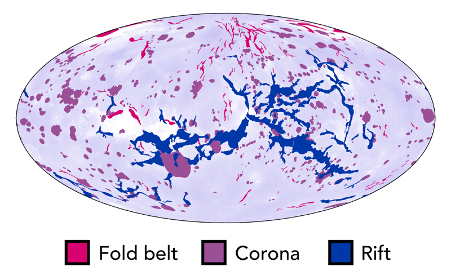
Figure 2: Main tectonic features on Venus mapped by Price & Suppe (1995) and Price et al. (1996) (Credit: Iris van Zelst).
In your opinion, what will be the future of geodynamics?
I think increased collaborations and interdisciplinary science are the way to go. We often don’t realise how niche our work is, until we’re thrown into this other field and a whole new world opens up! Oftentimes there are areas of intersection between those other fields and geodynamics, so seek them out, learn, and collaborate. I think that’s the only way to tackle the big questions. And it’s fun!
What advice do you have for early-career researchers who would like to continue their careers in geodynamics?
Find a good mentor or, indeed, multiple mentors. Just generally people in the same broad field of science you’re in (or want to be in) that you can rely on and who will cheer you on in this career. These people will be invaluable throughout your career and indeed your life. Cherish those relationships and maintain them.
Once you have your support network, find something (a topic, a research question, an outreach project) that really excites you and go for it! Maybe it will take a while before you actually get to work on your dream project, but if you keep your eyes on the prize, you will probably get there someday. In the meantime, try to have fun in whatever you do (I know it can be hard sometimes; but do try) and stay curious. You never know what exciting thing is waiting for you just around the corner!
References: Garcia, R. F., van Zelst, I., Kawamura, T., Näsholm, S. P., Horleston, A., Klaasen, S., ... & De Toffoli, B. (2024). Seismic wave detectability on Venus using ground deformation sensors, infrasound sensors on balloons and airglow imagers. Earth and Space Science, 11(11), e2024EA003670. https://doi.org/10.1029/2024EA003670 Price, M., & Suppe, J. (1995). Constraints on the resurfacing history of Venus from the hypsometry and distribution of volcanism, tectonism, and impact craters. Earth, Moon, and Planets, 71(1–2), 99–145. https://doi.org/10.1007/bf00612873 Price, M., Watson, G., Suppe, J., & Brankman, C. (1996). Dating volcanism and rifting on Venus using impact crater densities. Journal of Geophysical Research, 101(E2), 4657–4671. https://doi.org/10.1029/95je03017 Van Zelst, I., Maia, J. S., Plesa, A. C., Ghail, R., & Spühler, M. (2024). Estimates on the possible annual seismicity of Venus. Journal of Geophysical Research: Planets, 129(7), e2023JE008048. https://doi.org/10.1029/2023JE008048

